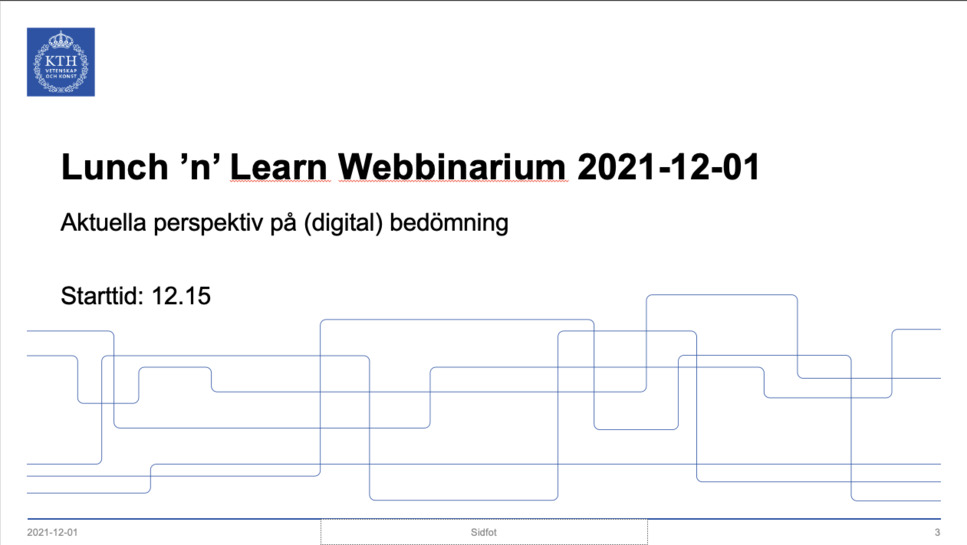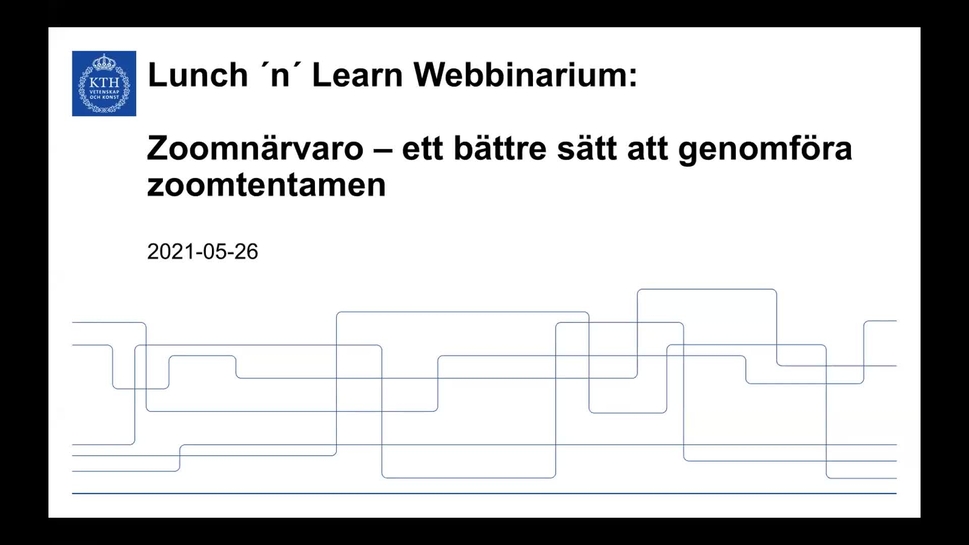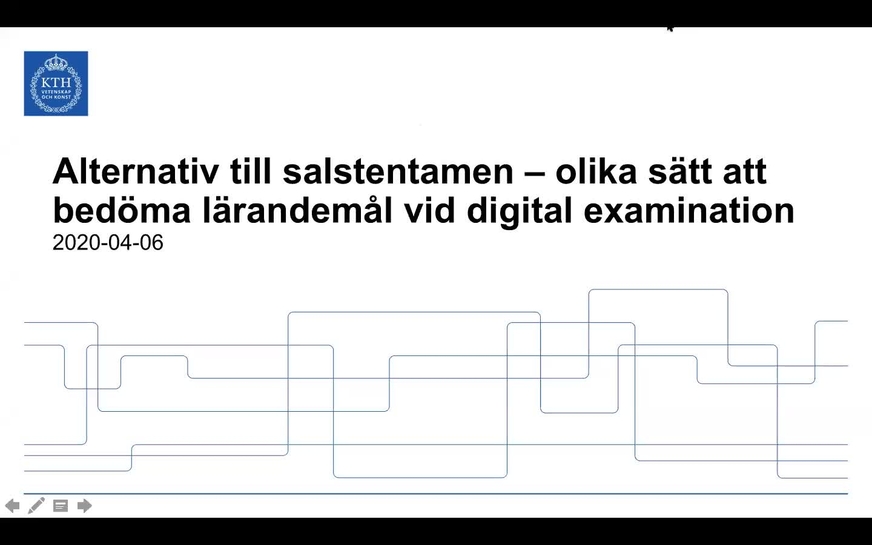Theme: Digital grading
The importance of safe and correct assessment is great, but how do you as a teacher achieve this when the assessment takes place digitally? And how do you adjust the assessment for students with compensatory support? Here you will find webinars on the subject which, for example, address different perspectives on digital assessment and present alternatives to the classroom exam. You get to take part in both the theory behind it and teachers' practical experiences.
The following webinars can be found on this page:
- Current perspectives on (digital) assessment
- What applies to adapted examination for students with recommended compensatory support when the examination takes place remotely?
- Zoom presence – a better way to hold a zoom exam
- Alternatives to classroom examinations – different ways to assess learning outcomes in the digital examination
- Teacher stories: How I replaced a written exam with a home exam.
Current perspectives on (digital) assessment
Date of recording: 2021-12-01.
Language: Swedish.
The webinar is based on KTH's vision 2027, where education is described as innovative and benefits from digitalization. This, of course, also includes how student performance is assessed.
Assessment, digital or not, needs to be addressed early in the course's design process and be in line with the purpose of what is assessed. And to remain relevant, also assess what kind of knowledge and skills are essential after the students graduate from KTH.
The perspectives addressed are:
- Digital assessment, where all or part of the assessment is digitally mediated and managed.
- Authentic assessment, which takes place in a situation similar to real situations.
- Continuous examination, where the students are assessed throughout a course, for example, with laboratory sessions, smaller sub-exams, etc.
Current perspectives on (digital) assessment (Swedish, play.kth.se) .
What applies to adapted examination for students with recommended compensatory support when the examination takes place remotely?
Date of recording: 2020-05-13.
Language: Swedish.
As the examination forms are adapted to be remote, examiners must also consider how it affects students needing compensatory support, for example, longer writing time. In this webinar, you, as an examiner, will get an answer to this.
Among other things, we show what the governing documents that exist around this and give examples of how this can be handled. The presentation is held by Lena Salomonson and the administrators working with this from University Administration (GVS) at KTH.
Zoom presence – a better way to hold a zoom exam
Date of recording: 2021-05-26.
Language: Swedish.
Are you planning to hold an exam with Zoom? Are you worried about visual surveillance not working digitally? Learn more about Zoom presence, a developed, better way to conduct the Zoom exam. In this webinar, the educational developer of e-learning talks about the theoretical framework for Zoom presence, and a teacher tells how she uses Zoom in her examination.
The remote exam with zoom presence combines the take-home exam with the opportunity to ask oral questions. Examining with Zoom attendance enables an examination phase where the student's identity can be better checked. Compared to Zoom monitoring (where Zoom is used for visual monitoring), it is less sensitive to, for example, weak connection and the need for toilet breaks. Resources can also be used more efficiently.
Zoom presence – a better way to hold a zoom exam (Swedish, play.kth.se) .
Alternatives to written examinations – different ways to assess learning outcomes in the digital examination
Date of recording: 2020-04-06.
Language: Swedish.
The Department of Learning, KTH, gives various suggestions and tips on assessing the course's learning outcomes when the written examination is impossible. The webinar provides much space for your specific questions as a teacher or examiner.
The webinar discusses the advantages and disadvantages of different alternatives to the written exam. Tips are also given on concrete methods for structuring and administering the take-home exam in a good way. Topics such as time efficiency and the possibility of legal certainty will also be discussed.
Teacher stories: How I replaced a written exam with a home exam
Date of recording: 2020-09-29.
Language: Swedish.
Viggo Kann describes how written exams can be successfully replaced with quizzes and master’s tests with written and oral presentations. This works even in courses with large student groups.
The starting point for the webinar is the course Algorithms, data structures, and complexity. Both the theory and problem part of the exam in the course has been replaced by another examination: a peer-reviewed theory quiz and two individual master’s tests. The course is compulsory for the third-year students of the computer technology program with over 200 registered students.
The examination form has been developed over a long series of years, and no part of it took place on campus in the autumn of 2020. The assessment is made according to carefully specified assessment criteria, and the examination is fitted into the course so that the students will learn as much as possible.
Teacher stories: How I replaced a written exam with a home exam (Swedish, play.kth.se) .





